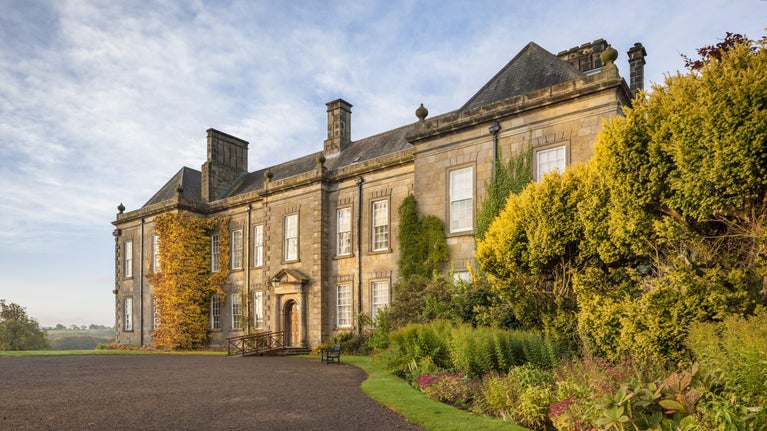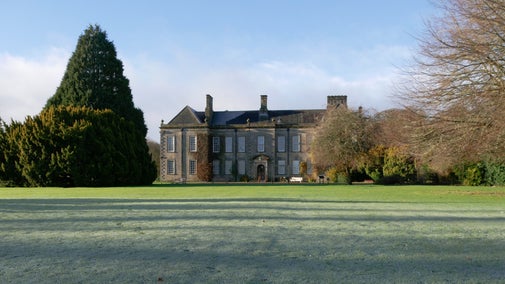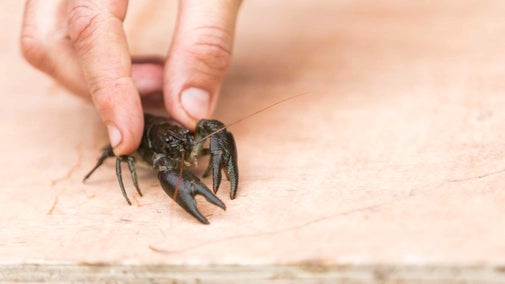
Discover more at Wallington
Find out when Wallington is open, how to get here, the things to see and do and more.

In July 2023, a family of four Eurasian beavers were released at Wallington, on a tributary of the Hart Burn in the heart of the estate. Their release was part of efforts to renew and restore nature and the hope was that they would help create a wildlife-rich wetland landscape. Two years on from the reintroduction, we're proud to share news on how things are going.
The beaver release at Wallington was the first re-introduction by the National Trust in the North of England and the third overall, following releases at Holnicote in Somerset and on the edge of the South Downs.
Having once been an important part of the ecosystem, beavers became extinct in Britain in the 16th century because of hunting for their fur, meat and scent glands. The family of beavers brought to Wallington from a population in Scotland, were released into the 24-hectare enclosure with the hope that would have a significant impact on the habitat within, creating a dynamic wetland ecosystem.
This introduction supported the National Trust’s strategy to restore a healthier natural environment and to improve 25,000 hectares (an area the size of 47,000 football pitches) of land for wildlife by 2025.
We are excited to announce the birth of two new beaver kits, marking the second consecutive year of successful breeding since the reintroduction of Eurasian beavers into an enclosure on the 5,431-hectare (13,420-acre) estate in July 2023.
Following signs of lactation observed in the adult female on wildlife cameras in early June 2025, the ranger team eagerly awaited confirmation of a new arrival or arrivals. In early July, camera trap footage captured the first sightings of the young kits with their mother.
Since their reintroduction the team of ‘ecosystem engineers’ have been busy creating a dynamic wetland ecosystem, slowing the flow of water through a network of 9 dams within the enclosure and boosting biodiversity along the river corridor. This spring saw a significant increase in frogspawn within the enclosure and toad spawn for the very first time. A wide variety of other wildlife has also been spotted within the enclosure on wildlife cameras, including woodcock, tawny owls, foxes, otters and kingfishers highlighting the benefits that this landscape is now providing to other species.
In July 2024, we announced the birth of a beaver kit, the first following the family’s release a year earlier. The kit was the first to be born on the Wallington Estate in Northumberland for over 400 years.
We are excited to announce the birth of two new beaver kits, marking the second consecutive year of successful breeding since the reintroduction of Eurasian beavers into an enclosure on the 5,431-hectare (13,420-acre) estate in July 2023.
We ask for your permission before anything is loaded, as this content may introduce additional cookies. You may want to read the Google YouTube terms of service and privacy policy before accepting.
Paul Hewitt, Countryside Manager at the National Trust, said: “Since welcoming the family of beavers to Wallington the resulting impact on the water environment has been nothing short of astonishing.
“As a keystone species we have watched with keen interest as beavers do what beavers do, expertly altering their river environment to the massive benefit of other species. With the development of dams, we are starting to see the benefits of beavers in slowing water flows and making the flood plain more resilient to future climate change.
“As a stark reminder of our changing climate, the release of the beavers here, coincided with the wettest 18-months ever recorded in England. Despite many winter storms with near record river levels recorded the beavers have continued to thrive. As their dam network continues to expand, we will see more evidence of slowing water flows and making more capacity for flood water. Now into the summer months the dammed wetlands are acting as “sponges” slowly releasing water at a steady rate.”
The beavers were relocated from wild populations in the River Tay catchment in Scotland, under licence from NatureScot, by consultant ecologist Dr Roisin Campbell-Palmer.
The adult female was, in fact, found to be pregnant when she was trapped in Scotland and taken into Beaver Trust’s holding facilities at Five Sisters Zoo. What followed was a series of careful health checks, sensitive care, and detailed monitoring to ensure the female and her family were calm and comfortable to give the unborn beaver kit the best chance. The team worked to create a bespoke habitat at Five Sisters Zoo, where the beaver family would have plenty of space and enrichment while awaiting the birth of the kit.
A short film was released by the Beaver Trust and Five Sisters Zoo telling the behind the scenes story of a beaver kit’s birth at the Zoo and successful release at National Trust’s Wallington Estate, highlighting the work of those involved who went above and beyond to make it happen. You can view the film at the bottom of this page.
A growing number of sites in the British Isles have reintroduced beavers. The National Trust’s Wallington programme will be carefully monitored for its benefits: from water quality and floodwater management to ecology and vegetation changes, as well as a research study into how the beavers and the native, white-clawed crayfish co-exist in the same watercourse which will be undertaken by the Environment Agency. Newcastle University are creating a 3-D model of the enclosure to help monitor the habitat changes that take place over time. We are looking forward to sharing findings in due course.

The beavers form part of Wilder Wallington, a long-term project to improve prospects for nature across the 5,300-hectare estate and beyond. Other plans include encouraging the migration of pine martens, restoring historic hedgerows, species-rich grassland and areas of peatland, planting woodland and wood pasture, tackling invasive non-native species, supporting farmers to incorporate more nature into their business plans, and alleviating flooding through natural flood management.
Discover the behind the scenes story of the first beaver kit born at Five Sisters Zoo that was released at the National Trust's Wallington Estate in Northumberland, and is now thriving. Told by those who went above and beyond behind the scenes to make it possible.
We ask for your permission before anything is loaded, as this content may introduce additional cookies. You may want to read the Google YouTube terms of service and privacy policy before accepting.

Find out when Wallington is open, how to get here, the things to see and do and more.
Discover Wallington, where a historical house meets rolling hills, woodlands and a walled garden.

Wallington is going big! Wilder Wallington is a landscape-scale nature renewal project across the whole estate and beyond, aiming to capture carbon, reverse the decline in biodiversity and the impacts of climate change, and provide a place where nature and people to thrive together.
The long-term recovery of red squirrels remains a top priority for us here at Wallington and is part of a wider nature recovery programme. Our rangers and volunteers work across the entire estate safeguarding and supporting the variety of native species that call this special place home; read about our red squirrel conservation programme.

The pine marten was once a familiar feature of English woodlands and plays an important role in keeping our woodlands healthy and balanced. It's thought that the species was once the country’s second most common carnivore (after the weasel), but due to habitat loss and hunting it's now the second rarest (after the wildcat). Here at Wallington we're working in partnership with Vincent Wildlife Trust to encourage the natural expansion of pine martens into the Wallington Estate.

Find out more about our significant conservation project aimed at protecting the native white-clawed crayfish, now classified as endangered and at risk of extinction.

Nature is depleting faster in the UK than almost anywhere else in the world. Donating to Adopt a Plot is a small way you can take a big step towards restoring nature across landscapes.
